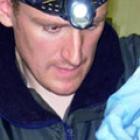Get access to all handy features included in the IVIS website
- Get unlimited access to books, proceedings and journals.
- Get access to a global catalogue of meetings, on-site and online courses, webinars and educational videos.
- Bookmark your favorite articles in My Library for future reading.
- Save future meetings and courses in My Calendar and My e-Learning.
- Ask authors questions and read what others have to say.
Performing and interpreting sinus endoscopy
Get access to all handy features included in the IVIS website
- Get unlimited access to books, proceedings and journals.
- Get access to a global catalogue of meetings, on-site and online courses, webinars and educational videos.
- Bookmark your favorite articles in My Library for future reading.
- Save future meetings and courses in My Calendar and My e-Learning.
- Ask authors questions and read what others have to say.
Read
Equine sinus disease is a common condition of the equine head. Typically it presents with a unilateral nasal discharge. The characteristics of the discharge may give clues to the nature of the disease. Nasal endoscopy should be the first step to identify the origin of any nasal discharge. The drainage angle of the rostral and caudal maxillary sinuses lie rostral to the ethmoturbinates in the middle meatus. Whilst it is possible to perform transnasal sinus endoscopy the size of the drainage angle means smaller scope diameters are required. In cases with sinusitis the drainage angle may be enlarged making endoscopy easier, however, in many cases access will not be possible.
Radiography can be useful to assess the sinuses for presence of fluid or soft tissue opacity but it can be difficult to determine the exact location and nature of these. Standing computed tomography has more recently been used to assess conditions of the head. The three-dimensional nature of this imaging modality removes problems associated with superimposition and can increase the sensitivity and specificity of diagnostic imaging. However, the availability of the modality is comparatively limited and can be expensive. Systems capable of computed tomography in the anaesthetized horse may be more widely available but there is an increased risk and cost. Undoubtedly computed tomography offers the best opportunity to recognize disease and anatomical variation in the individual case.
Direct sinus endoscopy via trephination offers the opportunity to visualize the internal structure and contents of the sinus cavities. The sinuses are divided in to seven paired compartments which are separated in to two groups, rostrally and caudally. The rostral group comprises the rostral and ventroconchal sinuses. The caudal group is more complicated comprising frontal, dorsal conchal, caudal maxillary, sphenopalatine and ethmoidal sinuses. The frontal and dorsal conchal are sometimes referred to as the conchofrontal sinus.
Rostral maxillary sinus portal
The rostral maxillary sinus can be trephined directly 1cm below the halfway point on a line between the medial canthus and infraorbital foramen. Access is limited, especially in younger horses, due to the apices of the cheek teeth and therefore it is rarely used. The ventroconchal sinus cannot be accessed from this portal. It may be useful for specific conditions, such as cementoma, particularly following computed tomography to identify a specific site to allow treatment.
Caudal maxillary sinus portal
The caudal maxillary sinus can be trephined 2cm ventral and rostral to the medial canthus of the eye. This provides access to caudal sinus group. From here the maxillary septal bulla can idenitified.
Conchofrontal sinus portal
The conchofrontal sinus can be trephined caudal to a line between the medial canthi, slightly lateral to a midpoint between the ipsilateral medial canthus and midline of the skull. This provides access to the caudal sinus group including frontal and dorsal conchal sinuses and via the frontomaxillary opening the caudal maxillary sinus, sphenopalatine sinus and the maxillary septal bulla.
Maxillary septal bulla fenestration
Access from the caudal sinus group in to the rostral group can be achieved by fenestrating the maxillary septal bulla. This overlies the infraorbital canal and is a thin dividing wall between the two. In most cases this is most easily achieved via the conchofrontal sinus portal which then affords access in to the rostral maxillary and ventroconchal sinuses. In around 10% of cases the bulla cannot be fenestrated via this approach and access has to be created by a caudal maxillary sinus portal.
[...]
Get access to all handy features included in the IVIS website
- Get unlimited access to books, proceedings and journals.
- Get access to a global catalogue of meetings, on-site and online courses, webinars and educational videos.
- Bookmark your favorite articles in My Library for future reading.
- Save future meetings and courses in My Calendar and My e-Learning.
- Ask authors questions and read what others have to say.



Comments (0)
Ask the author
0 comments